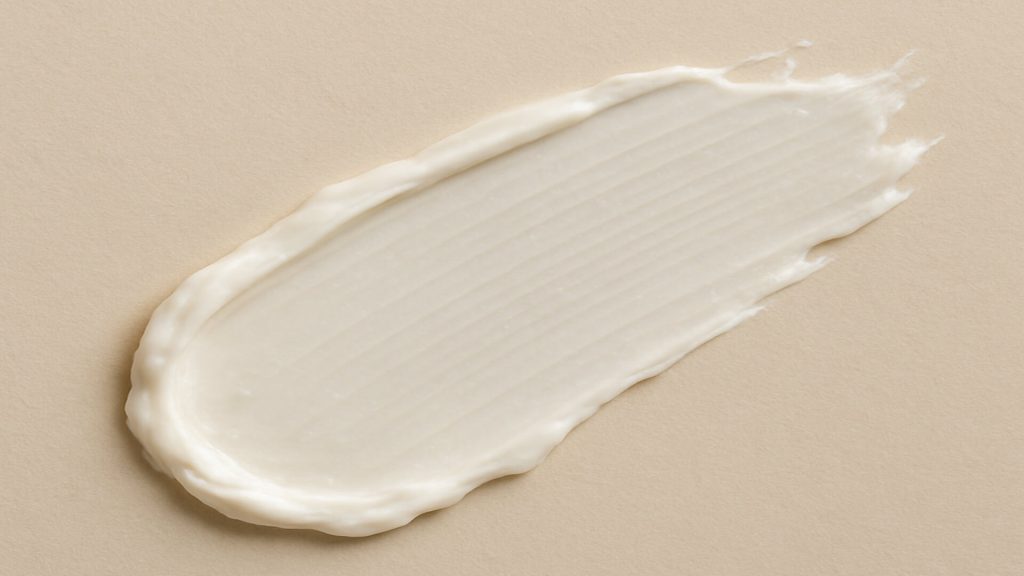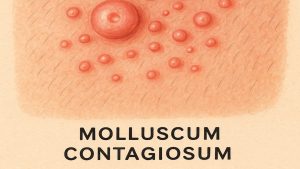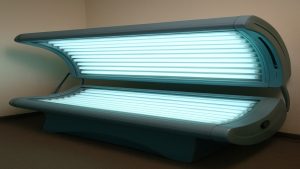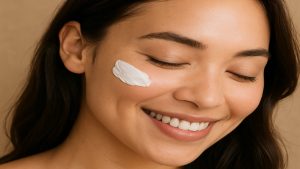- Kills acne-causing bacteria and reduces inflammation
- Fades dark spots and hyperpigmentation by curbing melanin production
- Calms redness and lesions, with 15% gel showing strong results
- Suits sensitive skin with minimal, short-lived side effects
- Pairs well with niacinamide, retinol, or vitamin C for enhanced results
The Science Behind Azelaic Acid
Azelaic acid is a dicarboxylic acid that penetrates the skin and blocks tyrosinase, an enzyme that triggers melanin production. This can help to fade dark spots and even skin tone.
In this article, we discuss findings including from a 2017 review that confirmed azelaic acid’s anti-inflammatory and antimicrobial actions, supporting its use for acne and rosacea [1].

Natural Sources Of Azelaic Acid
Azelaic acid occurs naturally in grains such as barley, wheat, and rye, and is also produced by a type of skin yeast known as Malassezia furfur [2].
Its natural origin appeals to individuals who prefer sustainable and well-tolerated skincare ingredients.
Azelaic Acid In Skincare Formulations
Due to its broad benefits, azelaic acid features in creams, gels, and foams for acne, rosacea, and pigmentation.
A 2003 study found that 15% azelaic acid gel was more effective than metronidazole for rosacea management [3]. Its versatility makes it valuable in dermatology and cosmetic formulations.
| Benefit | How It Works | Evidence | Additional Notes |
|---|---|---|---|
| Reduces Acne | Targets acne-causing bacteria and inflammation | 20% cream reduced acne lesions comparably to tretinoin after 6 months [4] | Works with benzoyl peroxide or AHA |
| Evens Skin Tone | Inhibits melanin production | Comparable to hydroquinone in some trials [5] | Brightens gradually and safely |
| Treats Rosacea | Reduces redness and lesion count | 15% gel with doxycycline reduced lesions by ~50% [13] | Outperformed placebo [6] |
| Gentle On Skin | Mild on sensitive skin | Minimal, transient irritation with 15% foam [7] | Suitable for most skin types |
Table 1: Azelaic acid’s main skincare benefits and evidence
How To Use Azelaic Acid
Introducing azelaic acid gradually allows the skin to adapt. It is available in multiple formulations to suit individual skin types.
Azelaic Acid Forms: Creams, Gels & Foams
- Creams: Hydrate dry skin while delivering active ingredients.
- Gels: Lightweight, ideal for oily or combination skin.
- Foams: Absorb easily with excellent tolerability.
A 2018 study showed 15% azelaic acid foam improved acne in 84% of patients after 16 weeks [7].
Adding Azelaic Acid Into Your Routine
- Start with 10% strength once daily, ideally at night
- After one month, increase to twice daily if tolerated
- Follow with a moisturiser to prevent dryness
Consistency is essential for visible results.
Combining Azelaic Acid With Other Ingredients
Azelaic acid pairs well with several actives to address multiple concerns simultaneously.
| Ingredient | Benefit | Usage Tip |
|---|---|---|
| Niacinamide | Reduces inflammation and evens tone | Safe to use together or alternate days [11] |
| Retinol | Improves texture and acne | Use azelaic acid in the morning, retinol at night [12] |
| Vitamin C | Brightens and fades dark spots | Apply vitamin C in the morning, azelaic acid at night [13] |
Table 2: Synergistic skincare combinations with azelaic acid
Azelaic Acid For Different Skin Concerns
Azelaic acid offers multi-targeted benefits across acne, rosacea, and hyperpigmentation.
| Skin Concern | Key Action | Evidence | Timeframe |
|---|---|---|---|
| Acne | Clears bacteria and unclogs pores | 20% cream matched tretinoin efficacy [4] | 4–8 weeks |
| Rosacea | Calms redness and inflammation | 15% gel reduced lesion count by ~50% [13] | 8–12 weeks |
| Hyperpigmentation | Inhibits melanin production | 20% cream improved melasma after 15 weeks [12] | Several months |
Table 3: Clinical outcomes for different skin concerns
Azelaic Acid Side Effects
Azelaic acid is generally well-tolerated, though mild reactions can occur during early use.
- Tingling or burning: Temporary, improves with continued use. Apply every other night until tolerance builds.
- Dryness or peeling: Use a gentle cleanser and hydrating moisturiser.
- Irritation: Rare; reduce frequency or seek professional guidance if persistent.
Monderma’s Custom Formula With Azelaic Acid
Monderma offers prescription-strength formulations created by UK-registered prescribers and dispensed by a GPhC-registered pharmacy. Each treatment is personalised following clinical assessment.
| Ingredient | Strength | Description | Skin Benefit |
|---|---|---|---|
| Azelaic Acid | 3–20% | Naturally derived dicarboxylic acid | Reduces melanin and inflammation |
| Adapalene | 0.1–0.3% | Vitamin A derivative | Promotes cell renewal and unclogs pores |
| Niacinamide | 2–4% | Vitamin B3 derivative | Supports barrier and tone balance |
| Tretinoin | 0.01–0.1% | Prescription retinoid | Increases turnover and smooths texture |
Table 4: Key ingredients in Monderma’s custom formulas
Conclusion
Azelaic acid is a clinically proven, gentle yet effective treatment for acne, rosacea, and hyperpigmentation. Its anti-inflammatory, antimicrobial, and pigment-balancing properties make it suitable for everyday use, even on sensitive skin.
You can complete a free online consultation reviewed by a GPhC-registered prescriber to see if a prescription-strength formula containing azelaic acid is right for your skin.
Content is for informational purposes only. Monderma treatments are prescribed following consultation. Results and timeframes can vary. Use as directed by your prescriber.
Bibliography
- Del Rosso J.Q. Azelaic Acid Topical Formulations: Differentiation of 15% Gel and 15% Foam. J Clin Aesthet Dermatol. 2017;10(3):37–40.
- Rangasamy D., Sebastian S.R. Bioprospecting Yeast Malassezia furfur: A Source of Azelaic Acid. J Drug Alcohol Res. 2023;12(10):105121.
- Elewski B.E. et al. Comparison of 15% Azelaic Acid Gel and 0.75% Metronidazole Gel in Papulopustular Rosacea. Arch Dermatol. 2003;139(11):1444–1450.
- Katsambas A. et al. 20% Azelaic Acid Cream in Acne Vulgaris vs. Tretinoin. Acta Derm Venereol Suppl. 1989;143:35–39.
- Bergman D., Luke J. Azelaic Acid. J Drugs Dermatol. 2017;16(5):475–480.
- Liu R.H. et al. Azelaic Acid in Rosacea: Systematic Review of RCTs. Arch Dermatol. 2006;142(8):1047–1052.
- Hashim P.W. et al. Efficacy and Safety of Azelaic Acid 15% Foam in Acne. J Drugs Dermatol. 2018;17(6):641–645.
- Hoffman L.K. et al. Azelaic Acid 15% Foam for Truncal Acne. J Drugs Dermatol. 2017;16(6):534–538.
- Thach T.T. et al. Azelaic Acid Induces Mitochondrial Biogenesis. Front Physiol. 2020;11:329.
- Sauer N. et al. Multiple Uses of Azelaic Acid in Dermatology. Postepy Dermatol Alergol. 2024;40(6):716–724.
- Feng X. et al. Azelaic Acid: Mechanisms of Action and Clinical Applications. Front Cell Infect Microbiol. 2024;14:11512533.
- Mazurek K. et al. Dermocosmetics Containing Azelaic Acid for Melasma. J Cosmet Dermatol. 2016;15(4):393–399.
- Draelos Z.D. Azelaic Acid Foam 15% in Rosacea. Cutis. 2013;92:306–310.
Find your perfect skincare formula
Takes less than 2 minutes – see what your skin needs
Get Custom Formula













